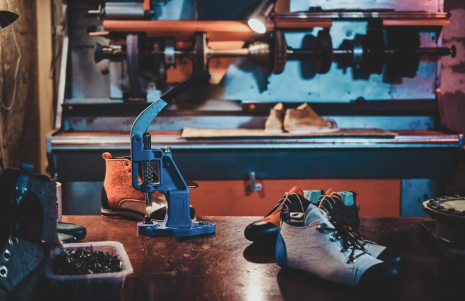
Advanced materials are no ordinary metals and plastics. They are special-purpose chemicals that function better in unfriendly environments. In the modern era of manufacturing, advanced materials are doing more than ever before—most obviously high-strength alloys and smart metals. These materials are not only resistant, but intelligent, flexible, and tough.
Industries such as aerospace, automotive, defense, and construction are all innovating what is possible with materials. They require materials that have the ability to handle extreme stress, heat, and pressure while still being efficient and lightweight. That’s when advanced alloys and smart metals are brought into play.
High-Strength Alloys: Power and Performance Made Possible
High-strength alloys are a mixture of metals designed to be stronger, lighter, or longer-lasting than their raw materials. They’re brought in when straight metal just isn’t sufficient.
- Titanium Alloys – Durable, lightweight, and corrosion-resistant—ideal for aerospace engineering and medical devices.
- Nickel-Based Superalloys – Resistant to heat and used in jet engines and nuclear power facilities.
- Aluminum Alloys – Used extensively in automobile manufacturing to marry strength with lightness.
- Magnesium Alloys – Lighter than aluminum but no less resilient, used in electronics and aircraft components.
- Steel Alloys – From tool steels to stainless steels, they are designed particularly for hardness, toughness, and resistance to corrosion.
Each alloy is built to perform a specific task, providing varying benefits based on the work it must perform.
Smart Metals: Materials That Adapt
Smart metals are materials that react to changes in their environment. They’re not passive building blocks—these “react” to stress, pressure, or heat. This is intriguing in systems where flexibility and accuracy are the number one concerns.
- Shape Memory Alloys (SMAs) – These metals have shape memory. Bend them, then heat them, and they go back to the original shape.
- Magnetostrictive Metals – They change shape when exposed to magnetic fields and are used in precision sensors.
- Piezoelectric Metals – They generate electric charge when stressed and used in medical devices and ultrasonic technology.
These metals are especially useful for use in applications like robotics, aerospace, and biomedical engineering, where flexibility is at issue.
How Advanced Alloys Benefit Modern Manufacturing
Under high-pressure manufacturing conditions, materials are pushed to their limits. The inappropriate metal can get distorted, break, or fail completely. Resilient alloys remove many of these issues with consistency under pressure.
They allow manufacturers to:
- Remove weight without sacrificing strength
- Improve car and airplane fuel efficiency
- Increase product life in harsh environments
- Reduce long-term maintenance cost
Whatever it is—a bridge, a turbine blade, or a satellite—using the right alloy means more performance and less failure.
Smart Metals in Everyday Life
Smart metals are high-tech-sounding, but they already feature in many products around us. They’re actually becoming the backbone of industries that are automated, safe, and precise.
- SMAs are used in self-expanding stents for cardiac surgeries.
- Piezoelectric metals find use in smartphone microphones and speakers.
- Magnetostrictive metals are also employed to aid in fluid control within fuel injectors.
They are applications which verify that intelligent metals are indeed more than experimentations— they’re fixing true problems on a daily basis.
Issues with High-Tech Materials
As anything new, there are some issues with high-tech materials:
- Price – High-tech materials and intelligent metals tend to be more expensive than regular material.
- Manufacture Difficulty – They may need specialist tools and methods of forming or assembling.
- Limited Availability – Not all suppliers carry these materials, and some have to be ordered for custom purposes.
Despite these challenges, the long-term advantages tend to pay for themselves.
Why Industries Are Making the Switch
More and more industries are making the transition to advanced materials because they offer better performance with fewer compromises. Whether it’s safety, sustainability, or speed, these materials stay companies in front of the competition.
- Aerospace – Lighter weight offers greater fuel efficiency and range.
- Automotive – High-strength materials build lighter, safer, and more efficient vehicles.
- Energy – Alloys resist hot temperatures in reactors and turbines.
- Medical – Intelligent metals make implants and devices tougher and safer.
Also Read:- GPU Dedicated Server: The Ultimate Powerhouse for High-Performance Computing
Additional work is being put to use with rising demand to decrease their cost and ease of handling.
The Future of Advanced Materials
The future of advanced materials is hurtling forward at breakneck speed. Scientists continually discover means of improving properties and cutting costs. New hybrid alloys and composite materials are already on the drawing board to address specific needs of contemporary engineering.
Some of the key trends are:
- Lighter but Stronger Materials – Designed to save energy without sacrificing safety.
- Self-Healing Metals – Experimental materials that can heal small cracks or damage on their own.
- Sustainable Alloy Manufacturing – Cleaner production and recycling technologies to minimize environmental footprint.
This new field of study is uniting material science, digital technology, and design to produce stronger, smarter, greener products.
Conclusion: The Metal of Tomorrow, Today
Advanced materials such as high-strength alloys and smart metals are no longer the domain of high-end high-techs only—they’re percolating into industries. Their adaptability, reactivity, and strength are revolutionizing the way we construct, innovate, and solve problems.
From the vehicles we drive to the aircraft we travel in, and even the healthcare equipment we use, fabrication Toronto is becoming a game-changer. As costs decrease and usage increases, we are bound to see even more innovation.






